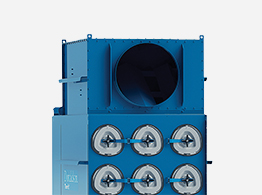If you own or supervise a chemical processing facility, you understand the balance of production demands and risk mitigation. Combustible dust presents a serious risk. Your combustible dust mitigation plan must satisfy applicable standards and codes, which are regulated by multiple authorities.
The National Fire Protection Association (NFPA) provides guidance on managing combustible dust in chemical processing. The 2019 edition of NFPA 652 Standard on the Fundamentals of Combustible Dust requires all manufacturers that handle, process, or produce combustible dust to complete a dust hazards analysis (DHA) by September 7, 2020. Many states and municipalities adopt NFPA standards in their codes, and OSHA refers to them during inspections for safe working conditions.
In a DHA review, you identify the combustible dust risks inherent in your process and work to minimize the probability and consequences of a combustion event. Because no single strategy is right for every facility, these key questions will help you start your assessment and determine your risks for use in developing a mitigation strategy for your unique operations.
Are any dusts in my facility combustible or explosible?
First, identify the characteristics of your dusts. Data from published sources may be available, but if they’re not, send a representative sample to a qualified dust testing lab. Tests can establish whether your dusts are combustible (can ignite in a pile or layer) or explosible (can ignite in a cloud), and also determine the potential speed and force of a combustion.
What other dust properties may affect mitigation plans?
Other characteristics of your dust, including toxicity, reactivity, corrosiveness, and instability, may be important factors in how you mitigate combustion risks. For example, you may need to segregate highly reactive materials with separate dust collection systems. Another issue to consider could be the materials used to construct the dust collector. Specific dust collector materials may be required, and others may need to be avoided. Be certain to raise such concerns with dust collector equipment suppliers, who will incorporate them when recommending or installing mitigation equipment.
What processes or control points create potential combustion hazards?
Activities such as material handling, mixing, blending, transfer, and packaging can all potentially discharge nuisance dust. Remember it can also settle on hard-to-see surfaces, such as light fixtures, pipes, and girders. This hidden dust can also be a hazard because if you have an initial explosion, it can become suspended in the air and trigger a larger secondary explosion. Inspectors consider dust thicker than 1/32 inch to be hazardous, so regular housekeeping is important.
How can I try to prevent combustion events?
The key to avoiding a combustion event is to separate its components: fuel, ignition source, and oxygen. In chemical processing, there are several options to reduce a potential ignition source from entering the dust collector:
Longer ducts — Increasing the distance between a spark’s generation point and accumulated fuel (dust collector) may give the spark a chance to extinguish before it reaches the combustible dust. Although potentially a low-cost solution, longer ducts may require increased energy usage and take up more space.
Passive abatement — Turbulence-creating devices in the duct can help accelerate the rate at which sparks extinguish. Their costs are moderate and they have low pressure loss. Issues to consider include duct length requirements and potential fouling by certain types of dusts.
Active abatement — Active abatement devices detect sparks in the duct and quench them using extinguishing agents. These systems provide a high level of detection and response, but are also more expensive due to their increased complexity and maintenance needs.
How can I limit the damage from a fire or explosion, if one should start?
Prevention steps cannot remove all risks, which is why you need protection strategies as well. Keep in mind that both fire and explosion protection systems should be considered and typically require different devices. Here are some protection methods available:
Sprinklers — Sprinkler systems respond to temperature changes and spray water into the dust collector. Sprinklers have a moderate initial cost, but may require significant clean-up time if the system is triggered.
Chemical fire supression — CO2 or other extinguishing agents can be triggered in the collector to smother a fire. Although initially more expensive than sprinklers, the system may allow easier clean-up; and because it’s dedicated to the collector, a chemical suppression system may be easier to relocate with the collector.
Explosion venting — Weak panels can be installed on the dust collector, designed to open during a deflagration event and discharge gases, flames, and debris in a planned direction. Although relatively inexpensive, this method risks secondary fires in the discharge area and may have longer downtime after an event.
Passive isolation — Passive isolation devices are activated by an explosion’s pressure wave and are designed to isolate an explosion to the dust collector. This option requires minimal equipment setup, but application can be limited by dust characteristics
Active isolation — Active isolation devices use sensors to detect an increase in pressure preceding an explosion and keep it from moving back through the duct. Active systems provide precise detection; however, these devices are more expensive and require system controls.
Outside location — This strategy places the dust collector outdoors, surrounded by a dedicated exclusion zone, which separates a combustion from plant assets.
The Ongoing Process of Risk Mitigation
Risk mitigation planning is an iterative process. Any time you change materials or processes, you should review your facility for risk. Even if you’ve made no changes, the NFPA standards specify a DHA review at least once every five years, and for good reason. A regular dust hazard review provides an opportunity to address the risks created by sometimes subtle changes.




